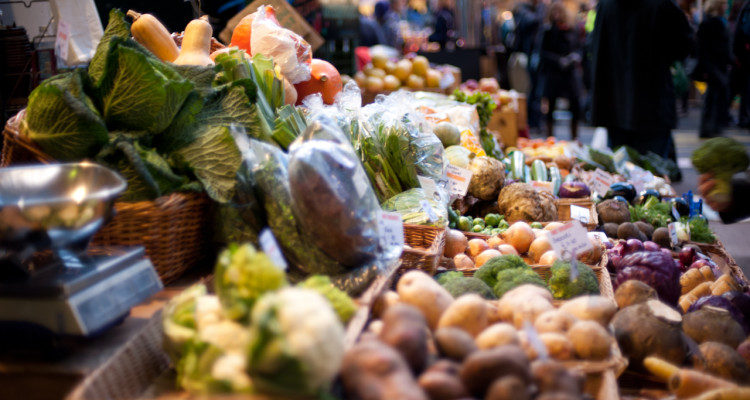INSIGHTS • FOOD SECURITY

A long way to go
BY MIKE POTHIER | PROGRAMME MANAGER, SACBC PARLIAMENTARY LIAISON OFFICE
IN THE Food security in South Africa report, published in 2019, Statistics South Africa (StatsSA) mentioned four aspects to food security. These are availability, accessibility, utilisation and stability.
Availability refers to the overall production and distribution of food across the country. Accessibility is about whether people can obtain, usually by buying, enough nutritious food to sustain a healthy life. Utilisation deals with whether or not food can be safely stored and cooked, and those who consume it are able to benefit properly from it. Stability is concerned with the availability and accessibility of food over the long term; this aspect recalls the Biblical notion of the seven years of plenty followed by seven lean years (Gen 41).
So the question of food security is perhaps more complex than it at first appears to be. In South Africa we generally enjoy a high level of food availability. In most years, we produce more than enough of our main staple crop, maize, to satisfy local needs, and to export to neighbouring countries. With the other major cereal crop, wheat, the situation is different—we grow only about half of our requirement and import the rest. When it comes to vegetables, fruit, meat and dairy, we are basically self-sufficient; if we import these it is because it is cheaper than producing them here, or to meet special tastes.
We don’t do badly as regards stability. We are all familiar with the problem of regular droughts, which can affect all kinds of food production, most seriously the maize crop. Fortunately, we can always turn to imports to make up the shortfall, and although this drives up the price, for those who have the money, the food of their choice is almost always available; rationing and empty shelves in the shops are not familiar to most of us.
The key qualification here, is ‘for those who have the money’. Food accessibility in South Africa is a major problem; millions of our people cannot afford to buy enough food to keep healthy. Over the last 15 years or so, between a quarter and a third of the population has been living below the food poverty line (the amount of money to satisfy minimum daily food, or calorie, requirements). In the last couple of years, with the effects of the COVID-19 pandemic, this proportion has almost certainly increased.
Food utilisation is also a problem. It is one thing to be able to buy food, but another to have the means to store it safely and hygienically, cook it properly, and ensure that when it is eaten it is still nutritious and beneficial to the body. Sometimes the wrong kinds of food are purchased, or foodstuffs are consumed in sub-optimal combinations e.g. eating multiple starches in the same meal, or unsuitable foods are given to children; all of this means that even if food is affordable, it ends up being wasted.
Many of these points were made in the government’s National Development Plan, published in 2012 and which had 2030 as a target for full implementation. We are now more than halfway through that period, and it is hard to argue that sufficient progress has been made generally, and in food security issues specifically. To quote from the StatsSA report:
Whilst South Africa is food secure at national level, the country is still food insecure at household level. About 13.4 million households had inadequate/severely inadequate access to food and about 1.6 million households experienced hunger in 2017. Households headed by females and those headed by black Africans are more likely to experience hunger and inadequate/severely inadequate access to food.
It is very unlikely that the situation has improved since 2019; it has probably worsened due to COVID-19. We have a long way to go before we can be satisfied that we have achieved the same degree of food security in individual households as we have at national level.
| Dates To Remember |
|
April 2 – World Autism Awareness Day 4 – International Day for Mine Awareness and Assistance in Mine Action 6 – International Day of Sport for Development and Peace 7 – International Day of Reflection on the 1994 Genocide in Rwanda 7 – World Health Day 15 – Good Friday 17 – Easter Sunday 21 – World Creativity and Innovation Day 22 – International Mother Earth Day 23 – English & Spanish Language Day 24 – International Day of Multilateralism and Diplomacy for Peace 25 – World Malaria Day 28 – World Day for Safety and Health at Work 30 – Our Lady, Mother of Africa 30 – International Jazz Day May 1 – St Joseph the Worker, Workers’ Day 3 – World Press Freedom Day 8 – Remembrance and Reconciliation for Victims of Second World War 8 – World Migratory Bird Day 15 – International Day of Families 17 – World Telecommunication and Information Society Day 20 – World Bee Day 21 – World Day for Cultural Diversity for Dialogue and Development 22 – International Day for Biological Diversity 29 – Ascension of the Lord 29 – International Day of UN Peacekeepers 30 – World No-Tobacco Day |
